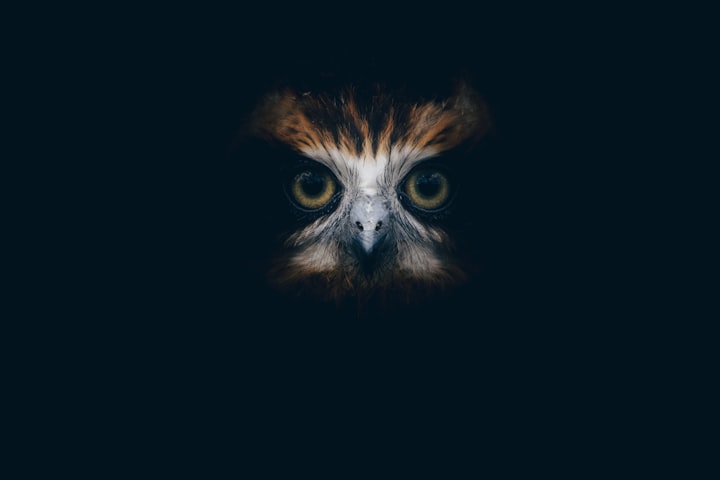HOW do owls fly silently at NIGHT?
The hidden superpower of owls you never knew.

In the dark depths of the night, when all is still and shrouded in a mysterious veil, there exists a remarkable creature that reigns supreme among the shadows, the owl.
These enigmatic birds of prey possess an uncanny ability that has baffled scientists and fascinated storytellers for centuries. the power to fly silently through the night. Join me on a journey through the secrets of the night sky as we unravel the mystery of how owls achieve this incredible feat.
Picture yourself in a moonlit forest, surrounded by the hush of the night. You hear the faint rustle of leaves underfoot, the distant cry of a lone wolf, and the occasional hoot of an owl.
Yet, as you strain your ears, you realize that something sets the owl's call apart. It is nearly as quiet as the night itself. How do they do it? Let's dive into the depths of their extraordinary adaptations and talents.
The Stealthy Feathered Cloak
To understand the secret behind an owl's silent flight, we must first examine the structure of their feathers. Unlike most birds, an owl's wing feathers possess unique serrations along the leading edge.
These serrations break up the turbulent air that typically causes the whooshing sound when birds fly. It's almost as if the owl's feathers have evolved into a finely-tuned stealth technology, allowing them to slice through the air with eerie quietness.
But that's not all. An owl's wing feathers also have a velvety texture, which further aids in noise reduction. These velvety feathers trap the sound of rushing air, muffling it like a plush pillow muffling a conversation.
Imagine flying through the night with feathers that silence the very essence of movement, and you'll begin to understand the magic of an owl's flight.
Silent Flight in Action
Imagine a barn owl in pursuit of its prey, gliding through the moonlit night like a ghost. As it approaches, the unsuspecting mouse is oblivious to the impending doom. This is where another incredible adaptation comes into play, the owl's unique wing shape.
Owls have large wings relative to their body size, which allows them to generate lift with minimal effort. This means less flapping and more gliding, reducing the chances of creating any telltale noise.
But it's not just the size of the wings. It's their shape too. Owls have broad, rounded wings that create less turbulence and provide greater stability during flight. This design, combined with their specialized feathers, ensures that their movements remain almost entirely noiseless.
The Silent Predator
Now, imagine you are that unsuspecting mouse, and the owl is closing in on you. Just as you feel the slightest breeze from above, you look up to see the predator, its eyes gleaming like two orbs of moonlight. In this moment, you understand the true genius of nature. A predator that can fly silently, making it all the more deadly.
Owls are masters of stealth in the animal kingdom. They are apex predators, and their silent flight is a key element of their hunting strategy. While other birds of prey rely on speed and agility, owls depend on silence and surprise. With their near-silent approach, they can get closer to their prey without alerting them. It's as if they possess the element of surprise in their very wings.
The Role of Super-Hearing
But silent flight alone is not enough to make an owl the ultimate nocturnal hunter. They also possess exceptional hearing that helps them locate prey in the dark.
Owls have asymmetrical ear openings. One higher than the other, and a specialized facial disc that funnels sound towards their ears. This remarkable adaptation allows them to hear even the faintest rustle of a mouse in the underbrush.
The combination of silent flight and acute hearing gives owls a lethal advantage in the cover of night. They can swoop down on their prey with pinpoint accuracy, their talons striking like a shadowy phantom, leaving their victims with no time to react.
An Ancient and Mystical Skill
As we delve deeper into the mysteries of owl flight, it becomes clear that this ability is not just a product of evolution but a gift from the cosmos itself. Owls have been revered and feared by cultures around the world for millennia.
In ancient Greece, they were associated with Athena, the goddess of wisdom. In Native American traditions, they were seen as symbols of both death and wisdom.
In many cultures, owls were believed to possess supernatural powers, including the ability to foretell the future or communicate with the spirit world. Perhaps it was their silent flight that contributed to their mystical reputation, as they could glide through the night with an air of otherworldly grace.
The Night's Silent Guardians
In the quiet heart of the night, owls take flight as silent guardians of the darkness. Their exceptional adaptations, from serrated feathers to extraordinary hearing, make them the apex predators of the nocturnal world. But their mystique goes beyond their hunting prowess. It extends to the very essence of their existence.
As we stand beneath the starry canopy of the night sky, let us not only marvel at the silent flight of owls but also reflect on the magic and wonder of the natural world. The enigmatic whisper of the owl in the night reminds us that there is still much to discover and cherish in the hidden corners of our planet, waiting to be unveiled by those who dare to venture into the world of shadows and secrets.
About the Creator
Yusuf Alam
Crafting Words into Amazing Stories | Freelance Copywriter | Turning Ideas into Impact






Comments
There are no comments for this story
Be the first to respond and start the conversation.